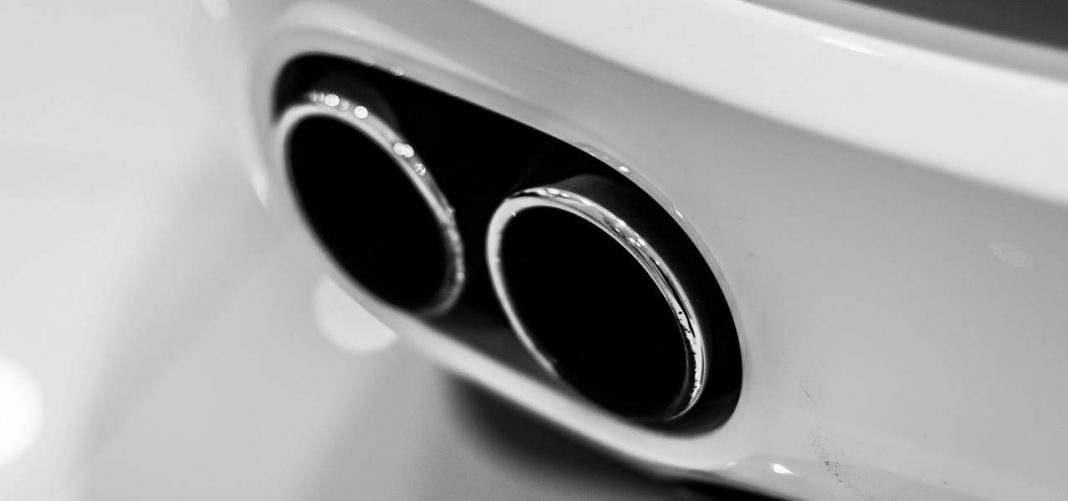UPDATED February 10, 2022 This piece has been updated to reflect the emergence of new technology


Christian Mathews Security Writer
Carbon monoxide is a dangerous gas that can prove to be fatal if inhaled by a person in large amounts. This is not the only cause. We will cover what causes carbon monoxide in a house and how we can prevent it.
When we breathe in this gas, it displaces the oxygen that is present in our blood. This eventually deprives our heart, brain and other organs of getting the required supply of oxygen. What’s even more concerning is that even small doses of carbon monoxide can have some severe implications on our health, such as brain damage or miscarriage in the case of pregnant women.
While this sounds scary, most people don’t worry too much about it. Most only concern themselves with fires and which smoke alarms are best. This is because they feel that carbon monoxide is rarely present in their homes or buildings. But such a lack of awareness or ignorance may cause you harm, so it’s better to be safe than sorry. We have put up this guide explaining everything about carbon monoxide accumulation inside homes and buildings as well as ways to prevent it.
What Causes Carbon Monoxide In A House?
The main source of carbon monoxide is combustion. Basically, anything that burns produces some amount of carbon monoxide. Examples include:
- Vehicles
- Gas stoves
- Generators
- Fireplaces
- Grills
- Gas ovens and heaters
- Cigarettes
- And even candles produce carbon monoxide, albeit in varying quantities
So now, you have probably realized that many sources of carbon monoxide are household appliances that you use regularly. This doesn’t mean you need to panic and stop using anything that burns. It may be a good reason to stop smoking cigarettes, but you definitely can’t be getting rid of grills, gas ovens and stoves. The main thing to keep in mind is the quantity of carbon monoxide produced.
Larger flames produce more carbon monoxide while smaller flames less, which isn’t that harmful as long as your house is well ventilated.
What Does Carbon Monoxide Smell Like?
Carbon monoxide is odorless, which is why it is often called a ‘silent killer’. Since it doesn’t have any smell, you would never be able to detect large amounts of carbon monoxide based on your senses. If a large amount of the gas were to be accumulated in your home you wouldn’t have a clue that you are breathing it in.
How Long Does Carbon Monoxide Last in the Air?
Now that you are aware of the sources of carbon monoxide, you know that your home can never be completely free from it. You might wonder how long does the gas lasts in the air inside your home. The weight of carbon monoxide is lighter than air. So if you are burning something outdoors such as a grill in your backyard, the carbon monoxide will quickly dissipate into the air.
When you are lighting a gas oven or stove, the gas will flow out if you have the windows open. Where the gas stays collected indoors is if the room is fully enclosed without any outlets. Even when you are burning your fireplace, carbon monoxide produced from it will move upwards, being lighter than air. So, the chimney above your fireplace will lead the gas straight out of your home.
What are the Symptoms of Carbon Monoxide Poisoning?
In the event that you have inhaled a heavy dose of carbon monoxide, your body will begin to show symptoms of carbon monoxide poisoning. It’s crucial to be aware of these symptoms because the sooner you recognize it, the better your chances of getting immediate medical care. This will also allow a faster recovery with little harm.
The main symptoms of CO2 poisoning are listed below.
Mild Symptoms Due To Short Term Exposure
When you get exposed to a high amount of carbon monoxide, you will experience some symptoms within a few hours. These include:
- Headaches
- Dizziness and nausea
- Blurred eyesight
- Confusion and disorientation
- And in severe cases, fainting or unconsciousness
Severe Symptoms Due To Long Term Exposure
When exposed to carbon monoxide for a long period of time, you will experience some severe symptoms such as:
- Brain, heart, or nerve damage, which are irreversible in the worst cases
- Breathing disorders
- Weak muscles and loss of balance
- Loss of memory, mostly temporary but can even be permanent in some cases
- Miscarriage in pregnant women
How to Prevent Carbon Monoxide Poisoning and Its Accumulation in your House
Knowing the dangers of carbon monoxide should make you aware and concerned about it. So let’s talk about different ways to prevent this deadly gas from accumulating. And by doing so, also preventing carbon monoxide poisoning for good.
Installing Carbon Monoxide Detectors
We have already mentioned that carbon monoxide cannot be detected by human senses, such as smell. A carbon monoxide detector is a device that sounds of an alarm whenever it detects dangerous levels of carbon monoxide. When the alarm goes off, quickly open all doors and windows, get out of the house and call for professional help immediately.
Proper Servicing of Combustion Household Appliances
Fuel combustion appliances, such as gas ovens and heaters or even your car engine, produce more amount of carbon monoxide when they are not serviced regularly. Servicing them every few months will ensure that they produce negligible amounts of deadly gas. If you have a furnace or fireplace at your home, have the chimney cleaned frequently because a clogged chimney will cause the gas to accumulate inside your home.
Proper Venting and Exhaust Systems
The vents and exhaust systems in homes continuously draw out the indoor air so that fresh air can replace it. When the exhausts are clogged, carbon monoxide is more likely to get trapped indoors. So it’s essential to have them inspected and cleaned from time to time.
Avoid Burning Large Flames Indoors
Avoid using appliances that produce large flames indoors. These include burners, charcoal-based grills and generators. They produce higher levels of carbon monoxide, which get dissipated quickly when used outdoors. However they linger around longer when used indoors, thus increasing the chances of you inhaling some of it.
Keep Your Homes Well Ventilated When Burning Anything Indoors
Leave the windows open and room well ventilated when burning smaller flames inside your house. These can include things such as the gas oven or stove. Constant airflow leads to carbon monoxide escaping quickly from the room.
Conclusion
Carbon monoxide should not be taken lightly. Heavy exposure to this gas can lead to death in a matter of minutes. And long term exposure to the gas can have implications just as devastating, if not worse, than death itself.
These facts are not meant to create panic, but rather to educate. Making you aware of carbon monoxide and its effects. Knowing what causes carbon monoxide in a house, we recommend you to take the necessary preventive measures. Most importantly, know where to place a carbon monoxide detector in your home and have it installed. This is the only guaranteed way of confirming the presence of carbon monoxide.

















































